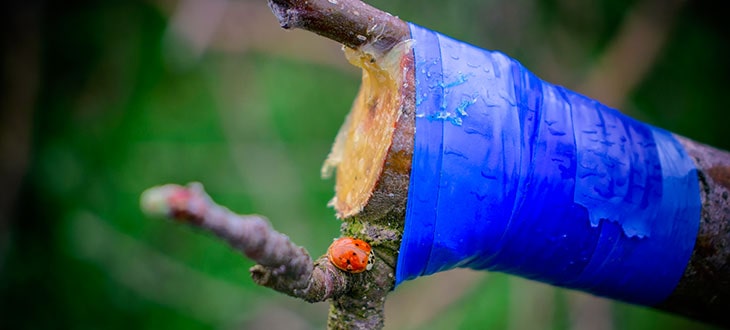10 Common Plants That Can Be Grafted
Want to learn more about grafting and what plants can be grafted? Here is a list of common plants that can be propagated using grafting.
Grafting is a vegetative propagation technique used by horticultors throughout the world to combine parts from two or more plants. This method involves transplanting a branch or bud from a plant onto another plant’s stem, branch, or root.
Typically, one plant is selected for its robust root system or hardness and is known as “rootstock.” The other plant, chosen for its desired features like fruits, flowers, leaves, or stems, is called the “scion.”
What is impressive about grafting is that we are not limited to grafting one plant type only with another variety of it. Many plants are compatible with various related plant species. Hence, we can create a whole different kind of plant.
For instance, we can use a plum tree as a rootstock for a peach tree.
What is even more amazing is that we can even graft a plant with several species of plants to produce a variety of different fruits simultaneously.
A fascinating example is that of Sam Van Aken, featured in a CNN’s article in 2015. He amazed the world by managing to graft 40 different varieties of fruit trees on the same rootstock. Therefore, a single tree gets to produce all these various fruits.
Several other advantages of grafting include:
- Increasing the production of fruits, flowers or leaves.
- Creating plant species more resistant to pathogens.
- Making varieties that can grow in colder climates and drought resistant.
- Creating more adaptable plants that require less fertilizer and soil amendments.
- Adaptation of some varieties to soils with a lower or higher pH.
- Strengthening the root system of some types of delicate plants.
- Earlier fruit production.
- Improving the taste or nutritional value of certain types of fruits.
In terms of grafting methods, these also vary. These are chosen depending on the plant’s type and our goal.
Although grafting is extremely common among fruit trees, many do not know that it can also be utilized on various plants we grow in our gardens.
So, below we have listed some of the most common plants that can be grafted.
Contents
1. Fruit Trees
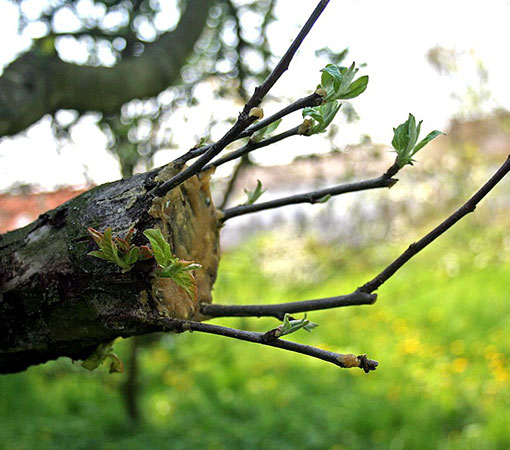
Fruit trees are among the plants that are most often grafted. The goal of grafting in fruit trees is usually to increase production, obtaining trees that produce tastier fruits or varieties that are more resistant to climatic conditions or diseases.
Tree grafting can be done in several ways, including:
- Cleft grafting
- T Grafting
- L-shaped grafting under the shell
- Grafting under the bark
Usually, fruit trees are grafted either in spring or late summer to autumn.
Below are a few examples of fruit trees rootstocks and their possible matches:
| Rootstock | Scion |
| Wild cherry | Cherry, sour cherry |
| Plum tree | Plum, wax cherry, peach, apricot |
| Apple grown from seeds | Apple variety |
| Almond | Peach, wax cherry |
| Lemon tree | Lemon, orange, mandarin, grapefruit, pummelos |
Note that not all tree species are compatible to be grafted together. Usually, there will be compatibility between other varieties of the same plant types of different species in the same genus.
2. Roses

Roses are popular outdoor plants due to their beauty, variety, and flagrant blooms.
Although roses can be quite easily propagated by planting cuttings directly in the ground, there are also advantages of grafting existing ones with other varieties of roses with more desirable characteristics.
Grafting can also make new plants more resistant to cold, drought, and even produce larger and more varied inflorescences.
The best time for rose grafting is after the summer bloom cycle and the preferred technique is via a T cut, between two nodes of the stem.
3. Tomatoes
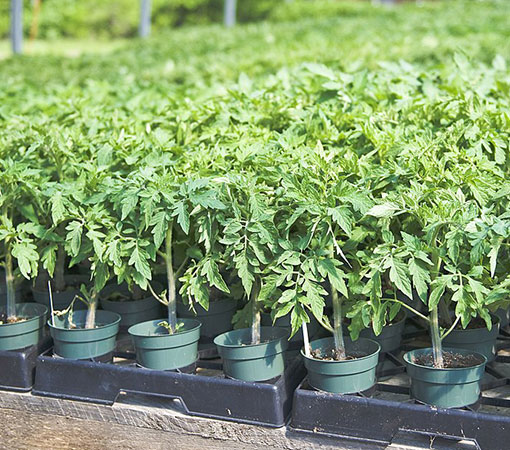
I’m sure not many know that tomato plants can be grafted with other tomato varieties.
The grafting of trees and woody plants has been well-known for many centuries. Yet, the herbaceous plant grafting, such as tomatoes, has only pretty recently become popular among farmers.
The purpose of grafting in tomatoes is to combine and use beneficial traits of both the rootstock species and the scion.
The varieties are usually picked for their capacity to resist particular diseases caused by different pathogens from the soil, or their ability to increase fruit yield or size. Additionally, through grafting, growers were able to create tomato plants with better tolerance to drought, cold, salinity, and flooding.
The most popular commercial method for grafting tomatoes is called “tube grafting.” This technique is highly effective, with success rates between 85-90%, and can be performed on very young plants.
Two other grafting techniques used on tomatoes are approach grafting and cleft grafting.
4. Cucumbers

Another popular garden plant that can be grafted is cucumber. Cucumber grafting commenced becoming popular in the 1960s when it was acknowledged for increasing cucumbers’ tolerance to low temperatures.
The rootstocks for cucumbers are usually several plants in the genus Cucurbita (the gourd family). These include species such as:
- Butternut Squash (Cucurbita moschata)
- Giant pumpkins (Cucurbita maxima)
- Bottle gourd (Lagenaria siceraria)
- Figleaf gourd (Cucurbita ficifolia)
- Wax gourd (Benincasa hispida)
- Bur cucumber (Sicyos angulatus)
- The sponge gourd (Luffa cylindrica)
- Muskmelon (Cucumis melo)
Cucumber grafting is primarily popular throughout Asia. However, in recent years, it also started getting traction in the US and other countries, mainly to control cucumbers’ soilborne diseases. Still, it has a very slow adoption due to the high costs involved in this process.
The most popular techniques for cucumber grafting are splice, hole insertion, and tongue approach. (source)
5. Avocado
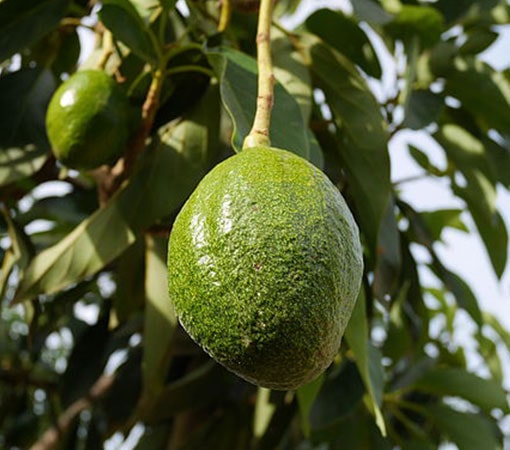
Avocados, like various tropical fruit trees, are propagated through grafting.
Although an avocado tree can be grown relatively easily from seed, this approach usually comes with a few drawbacks, including the necessity for a long time for the plant to reach maturity and produce fruits. It can take anywhere from 5 to 13 years before a seed-grown avocado to bear fruits.
Additionally, there is the risk that the trees grown from seed may produce fruits that are not edible at all.
Grafting or budding can reduce the waiting time, and you can ensure that your avocado tree will produce delicious fruits that are good to eat.
Two of the most popular avocado grafting techniques are whip grafting and bark grafting.
The best time to graft your avocado tree is anywhere from late winter to early spring.
6. Peppers
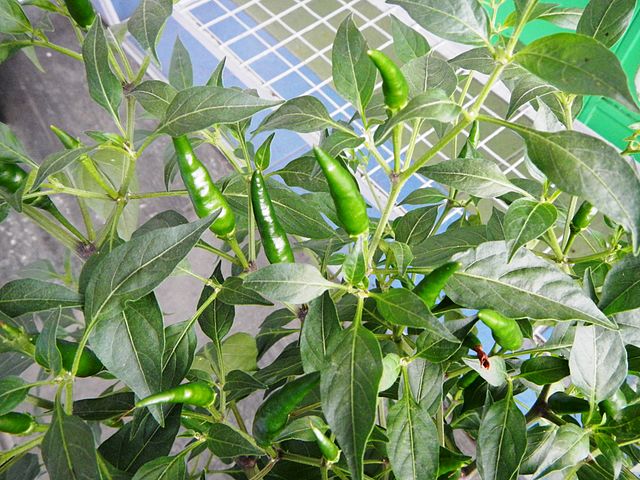
Pepper is another common plant that can be successfully grafted.
What is even more amazing is the fact that the pepper can not only be grafted solely with other species of peppers but can be a perfect scion even for tomato or potato plants.
But that’s not the only advantage. A pepper scion grafted in the rootstock of a tomato or a potato plant will enable the pepper scion to take more water and nutrients, develop on a more robust root system and stem, and achieve faster growth. Additionally, a grafted pepper plant can produce fruits with higher abiotic stress tolerance, can grow larger in size, and have even a better taste.
Pepper scions can also be grafted onto rootstocks of other pepper varieties to obtain plants more resistant to diseases, that grow in various soil types, are more accustomed to wet environments, and for a productivity boost.
Probably the most common pepper grafting technique is via a V-shaped cut.
7. Watermelons
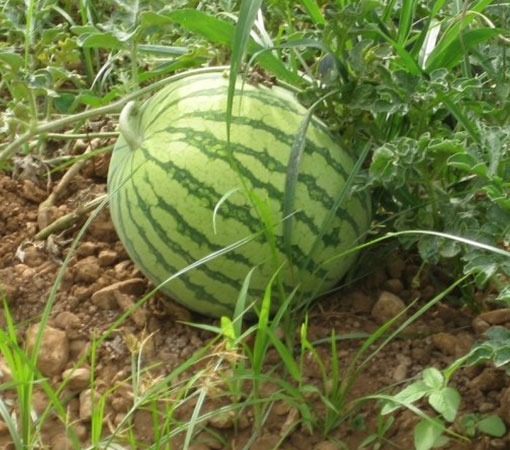
Watermelon grafting is a process that contributes to increased production, improves cold tolerance and soil-borne disease resistance. It also has positive effects to obtain larger fruits with a more pleasing shape.
Watermelon scions are usually grafted with hybrid squashes rootstocks as they are highly resistant to several common fungal diseases such as fusarium wilt, mosaic virus, or gummy stem blight. However, there may be some disadvantages as well if we do not choose the suitable rootstock, such as obtaining less sweet fruits or with a weaker flavor.
Various studies have confirmed that the productivity of grafted watermelons is 30 to 50% higher than that of regular plants. Also, it appears that grafted plants require less fertilizer.
There are mainly three techniques used to graft watermelons: one cotyledon splice, tongue approach, and hole insertion.
8. Eggplants

Although eggplants are grown by many gardeners, not many know that they can also be grafted.
Eggplant scions can be grafted on rootstocks of other eggplant species, including wild ones such as turkey berry (Solanum torvum Sw.), vila-vila (Solanum sisymbriifolium Lam.), on tomato plants, on giant devil’s fig (Solanum chrysotrichum), and a few other plants in the nightshade family.
One of the main reasons eggplants are grafted is to create plants more resistant to fungal diseases, particularly Verticillium wilt (Verticillium albo-atrum), which frequently causes major eggplant crop losses.
The most common approaches for grafting eggplants are cleft grafting, splice grafting (also known as tube grafting or top grafting), and side grafting.
9. Grapevines
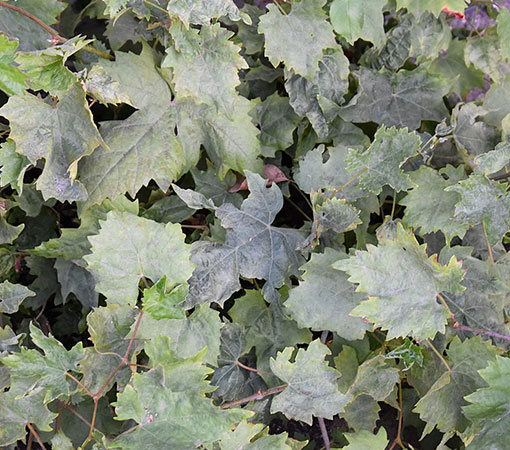
One of the common ways for propagating grapevines is through grafting. This process enables winemakers to quickly raise mature vines on top of the already established plants.
This technique also allows growers to quickly try other varieties of grapevines without having to wait years.
Also, certain varieties are more resistant to certain diseases, more adaptable to various soil types, withstand harsh climatic conditions, drought-resistant, etc. Hence, they are often excellent rootstocks for scions of other varieties with good yield but more sensitive.
The most common methods of grafting grapevines in the field are:
- Grafting into the underground stem
- Split grafting of the aerial stem
Before choosing the rootstocks, it is important to first make sure that they are not carrying any diseases. Otherwise, this will also be transferred to the new grafts.
10. Cacti
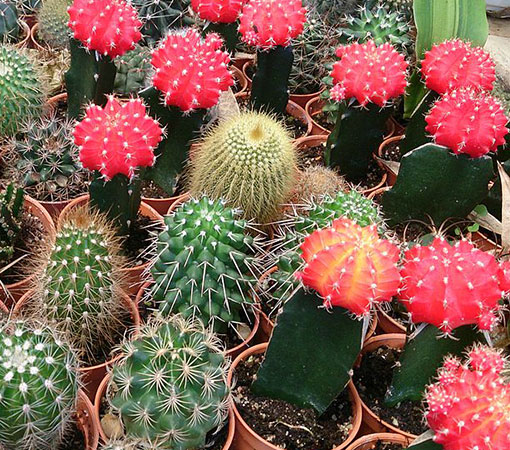
Another popular houseplant that can be propagated through grafting is the cactus.
Cacti can be joined with other species of cacti. They are generally grafted to create plants with a unique look, but there may be also a few other reasons like obtaining more resistant and adaptable plants.
By combining two or more compatible species, you can obtain colorful or futuristic-looking cacti.
Cacti grafting may also be ideal for beginner grafters because the process is straightforward and has high success rates if done correctly.
Final Word
These are just a few common plants of the many that can be grafted.
Although grafting is a popular technique to obtain fruit trees with better yields, it has also started to become popular among herbaceous plants in recent years.
Although grafting results are not always the ones desired, and sometimes the chances of success are pretty low, the advantages of using this method are many, including obtaining plants more resistant to disease, severe climatic conditions, various types of soil, to get plants with more desirable features or to test multiple varieties faster using the root systems of existing plants.

